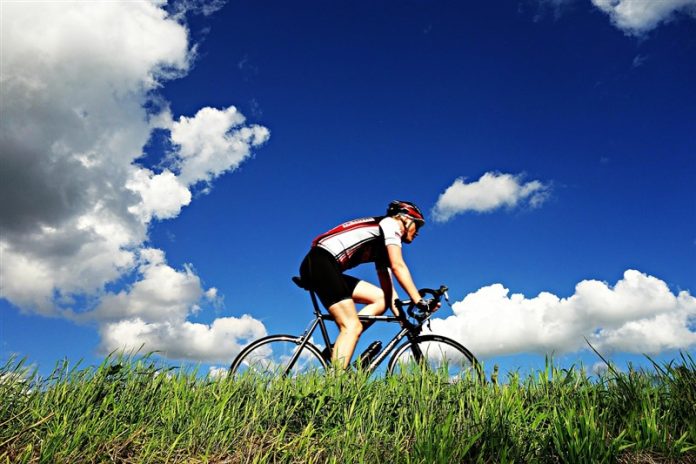Introduction
Long-distance cycling is an immensely rewarding pursuit, combining endurance, strategy, and the thrill of exploration. Whether you’re preparing for your first 100km ride, planning a multi-day tour, or aiming for a Gran Fondo or Audax event, having a structured training plan is essential. This guide will walk you through how to build a long-distance cycling training plan that improves stamina, builds strength, and prepares your body and mind for the demands of extended time in the saddle.
Why You Need a Long Distance Cycling Training Plan
Training for long-distance cycling is not just about increasing mileage. A comprehensive plan ensures your body adapts progressively, reduces the risk of injury, and enhances performance. It also helps you understand your nutrition, hydration, pacing, and gear needs, all of which play a critical role on longer rides.
Key Components of a Long-Distance Cycling Training Plan
Weekly Structure
A balanced weekly schedule allows for improvement while preventing overtraining. Most cyclists benefit from 3–5 rides per week, depending on their experience and goals.
Progressive Overload
Gradually increasing distance and intensity teaches your body to cope with the demands of endurance riding. Avoid jumping too quickly from short rides to long ones.
Recovery and Rest
Rest days are just as important as training days. They allow your muscles to repair and grow stronger.
Nutrition and Hydration
Training allows you to test what foods and drinks work best for you on long rides. Dialing in your fueling strategy now prevents bonking later.
Mental Conditioning
Spending hours on the bike requires focus and mental resilience. Training prepares your mind for the repetitive nature and occasional discomforts of long-distance cycling.
Phases of a Long-Distance Training Plan
1. Base Phase (Weeks 1–4)
The goal in this phase is to build aerobic fitness with low-to-moderate intensity rides.
- Ride Duration: 60–90 minutes for weekday rides, longer on weekends
- Focus: Consistent cadence, relaxed pacing, good bike handling
- Strength Work: Incorporate bodyweight exercises or gym sessions 2x per week
2. Build Phase (Weeks 5–8)
Introduce longer distances and light intervals to improve endurance and cardiovascular efficiency.
- Increase weekend ride distance by 10–15% weekly
- Add hill repeats or tempo rides midweek
- Practice eating and drinking during rides
3. Peak Phase (Weeks 9–11)
This is where your rides reach their longest distances, close to your event or touring goal.
- One long ride per week that simulates your target distance
- Midweek rides become more specific (intervals, threshold efforts)
- Prioritize recovery: include stretching, sleep, and light days
4. Taper Phase (Week 12)
Reduce volume to allow your body to fully recover and be fresh for the big ride.
- Cut weekly volume by 40–60%
- Focus on short, high-quality rides
- Maintain hydration and fueling habits
Sample Weekly Training Schedule by Experience Level
| Day | Beginner (Target: 100km) | Intermediate (Target: 160km) | Advanced (Target: 200km+) |
|---|---|---|---|
| Monday | Rest | Rest | Recovery ride (60 min) |
| Tuesday | 45 min steady ride | 60 min with short intervals | 90 min with climbing efforts |
| Wednesday | Core/strength (off-bike) | Recovery ride (45 min) | Zone 2 ride (90 min) |
| Thursday | 60 min ride with intervals | 90 min tempo ride | 2 hr ride with sustained climbs |
| Friday | Rest or light yoga | Rest | Strength or yoga |
| Saturday | Long ride (2–3 hrs) | Long ride (3–4 hrs) | Long ride (4–6 hrs) |
| Sunday | Optional short recovery ride | Group ride or rest | Recovery ride or short spins |
Strength Training for Cyclists
Building strength supports endurance and helps prevent overuse injuries. You don’t need to lift heavy weights; instead, focus on cycling-specific exercises that enhance muscle endurance and stability.
Best Exercises for Cyclists
- Bodyweight squats and lunges
- Planks and core rotations
- Deadlifts (with light weight)
- Calf raises
- Glute bridges
Add these 2–3 times per week, especially during the base and build phases.
Nutrition Strategies for Long-Distance Rides
Nutrition can make or break your performance. Train your stomach like you train your legs by testing your strategy well in advance.
Before the Ride
- Eat a carb-rich meal 2–3 hours before
- Stay hydrated (sip water regularly)
During the Ride
- Consume 30–60g of carbohydrates per hour (gels, bars, bananas, etc.)
- Electrolyte drinks help with salt balance
After the Ride
- Rehydrate with water and electrolytes
- Eat a mix of carbs and protein (e.g., smoothie, sandwich)
Tips for Effective Long-Distance Training
- Use a heart rate monitor or power meter to track intensity
- Keep a training log to monitor progress and identify patterns
- Ride with others for motivation and accountability
- Test your gear setup, saddle comfort, and bike fit on long training rides
- Plan routes that mimic your event terrain (hilly vs. flat)
Common Mistakes to Avoid
Skipping Recovery
Overtraining can lead to burnout and injury. Listen to your body and take rest seriously.
Poor Bike Fit
Discomfort on long rides often comes from improper setup. Visit a bike fitter if needed.
Ignoring Nutrition
Relying only on water or not eating enough during rides leads to energy crashes and cramping.
Inconsistent Training
Regularity is more effective than occasional long rides. Stick to your schedule as closely as possible.
Tools and Apps to Help You Train
Modern cycling tech can keep your plan on track and help you measure results.
- Strava – Track your rides, compare segments
- TrainingPeaks – Create structured plans and analyze data
- Komoot – Plan routes and explore new areas
- Wahoo / Garmin Devices – Monitor heart rate, distance, and power output
Conclusion
Creating a long distance cycling training plan is about more than logging miles—it’s a structured journey that prepares your body and mind for endurance, consistency, and exploration. Whether you’re chasing a personal goal, preparing for your first Gran Fondo, or simply want to enjoy multi-day touring with confidence, a well-designed plan is your ticket to a more enjoyable and successful ride.
Stick to your schedule, respect rest days, fuel your efforts, and the rewards will come. With time, consistency, and the right mindset, you’ll be amazed at how far your legs—and your spirit—can take you.















